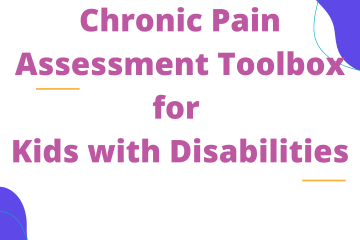Spasticity-related pain in children/adolescents with cerebral palsy. Part 1: Prevalence and clinical characteristics from a pooled analysis
Pain is very common in people with cerebral palsy (CP) and can add challenges to physical activity, the ability to perform at school, sleep, and mental health. Although there is research that has looked at how many children and adolescents with CP generally experience pain, few have reported the cause of the pain. We studied how common pain was thought to be due to muscle spasticity in the legs or arms is in children/adolescents with CP.
We grouped children and adolescents who participated in several botulinum neurotoxin research studies to find out more about spasticity-related pain (SRP) either in the legs or the arms. The participants ranged in age from 2–17 years and were both ambulatory and non ambulatory, all GMFCS levels.
The Questionnaire on Pain Caused by Spasticity (QPS), was used since it was specifically designed to measure spasticity-related pain across different activities in children/adolescents with CP. The QPS was completed by the children or adolescents themselves directly or via an interviewer if they were capable of doing so. The parents or caregivers also completed a specific QPS version where they reported on their observations of pain behaviors in their child.
A total of 849 children and adolescents with leg spasticity and 454 with arm spasticity have reported measures. Of those, 331 children/adolescents with leg spasticity and 155 with arm spasticity self-reported on the questionnaire. We found that spasticity related pain with at least one typical activity was self-reported by 81.9% and 69.7% of these children/adolescents, respectively. Among the 841 parents/caregivers of children/adolescents with leg spasticity and 444 parents/caregivers of those with arm spasticity, behaviors relating to spasticity related pain were observed in 85.9% and 77.7% of their children, respectively. Parents/caregivers observed spasticity related pain throughout their children’s lower and upper extremities, most commonly in the foot, lower leg and knee or elbow, hand and forearm. Parents/caregivers reported that spasticity related pain negatively affected the majority of the children in various ways, including altering their activity level, posture, mood, facial expression, eating, sleeping, and interaction with others. The children and adolescents reported more pain with increasing physical demanding activities. Likewise, parents/caregivers reported that they observed pain behaviors more frequently during more demanding activities, including exercise. Spasticity related pain was more common in children/adolescents with greater gross motor function disability compared to children with lesser disability.
This tells us that pain due to spasticity is more common and intense in children and adolescents with CP than is generally thought. Based on these results there is a need for regular pain assessment in order to identify the source of pain and to initiate effective, long-term pain management in children and adolescents with CP and leg or arm spasticity.
There is a need for regular pain assessment in order to identify the source of pain and to initiate effective, long-term pain management in children and adolescents with CP and leg or arm spasticity.





